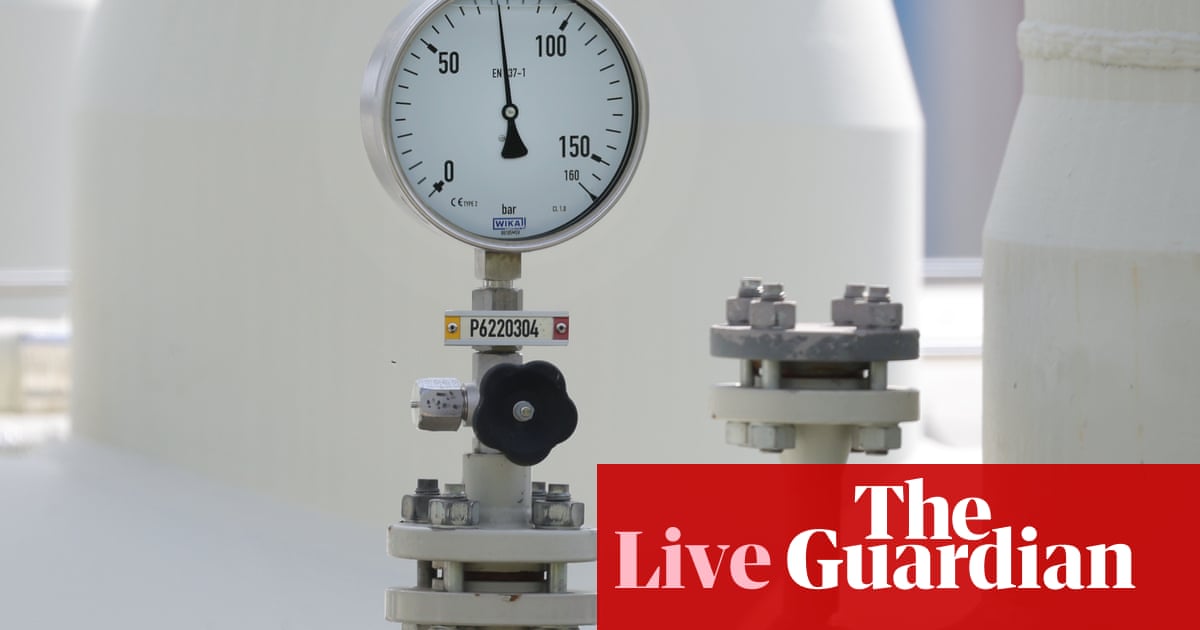We use some essential cookies to make this website work.
We’d like to set additional cookies to understand how you use GOV.UK, remember your settings and improve government services.
We also use cookies set by other sites to help us deliver content from their services.
You can change your cookie settings at any time.
Departments, agencies and public bodies
News stories, speeches, letters and notices
Detailed guidance, regulations and rules
Reports, analysis and official statistics
Consultations and strategy
Data, Freedom of Information releases and corporate reports
Updated 3 November 2022

© Crown copyright 2022
This publication is licensed under the terms of the Open Government Licence v3.0 except where otherwise stated. To view this licence, visit nationalarchives.gov.uk/doc/open-government-licence/version/3 or write to the Information Policy Team, The National Archives, Kew, London TW9 4DU, or email: psi@nationalarchives.gov.uk.
Where we have identified any third party copyright information you will need to obtain permission from the copyright holders concerned.
This publication is available at https://www.gov.uk/government/publications/principles-for-monkeypox-control-in-the-uk-4-nations-consensus-statement/principles-for-monkeypox-control-in-the-uk-4-nations-consensus-statement
This statement has been agreed by the UK public health agencies: UK Health Security Agency (UKHSA), Public Health Scotland, Public Health Wales and Public Health Agency Northern Ireland.
Mpox is a viral zoonotic disease that until May 2022, was primarily identified in Central and West Africa. There are 2 historical clades of mpox – Clade I (former Central African clade) with a reported mortality of 10%, and Clade II (former West African clade) with a reported mortality of 1% from epidemiological cluster and outbreak reports from Africa. Prior to 2022, it was occasionally identified in other countries related to travel from endemic areas in Central and West Africa.
Within the UK, mpox has previously been classified as a High Consequence Infectious Disease (HCID). This is not a legal classification but agreed by UKHSA and the NHS to enable a consistent approach to public health and clinical or NHS management.
The rationale for classifying mpox as an HCID was that there were infrequent importations, limited information about the disease course and outcome, no confirmed availability of vaccine and unclear approaches to treatment. Therefore, it was reasonable to have a highly precautionary approach designed for complete containment around single cases. This recognised that since the initial clinical assessment cannot determine the particular clade of mpox, this approach would reduce the potential for spread.
Since 13 May 2022, cases of mpox have been reported in multiple countries that do not have endemic mpox virus in animal or human populations, including countries in Europe, North America and Australasia. Epidemiological investigations are ongoing; however reported cases thus far have no established travel links to an endemic area. This suggests significant community transmission in multiple non-endemic countries. In the UK, all reported cases where rapid molecular testing results are available have been identified as Clade II. The World Health Organization (WHO) has agreed that Clade II consists of 2 subclades, Clade IIa and Clade IIb. Each of the clades and subclades subdivide into multiple lineages.
The situation in the UK has changed. There are now many cases and it is clear that community transmission is occurring with multiple generations of spread. Illness appears to be generally mild, though some individuals will require hospital admissions to manage secondary infections or complications from the illness. Pre and post exposure prophylaxis is now available. Due to this changed context, the clade of mpox predominantly circulating in the UK (Clade IIb, B.1 lineage) is no longer classified as an HCID.
However, importations of mpox from West or Central Africa, and/or mpox not caused by Clade IIb, B.1 lineage should remain classified as an HCID, as the severity of the original clades remains unknown.
Mpox is a Hazard Group 3 organism (ACDP/HSE). Other organisms in this category include Salmonella typhi, HIV, Hepatitis B and C, and Mycobacterium tuberculosis that are managed routinely in the community. From July 2022, the internationally agreed approach for managing clinical waste and diagnostic samples from mpox cases is that they are now managed as Category B, similar to the other organisms in Hazard Group 3.
These principles are to ensure a proportionate response and to deliver on achievable strategic outcomes. These principles do not replace the need for local dynamic risk assessments which remain key.
An overly precautionary response creates public health risk; for example the exclusion of healthcare workers can adversely affect clinical services, especially sexual health clinics and emergency departments (EDs). It is important that public health management promotes engagement with health services as well as preventing stigma and controlling spread. Given this, the strategic aims of the public health response to the clade of mpox currently circulating in the UK are:
Professionals – to inform development of operational guidance in UKHSA, NHS and other organisations.
These assumptions are based on the available data and expert opinion and are aligned with WHO. They will be regularly reviewed using the evidence generated in the incident response.
For individuals with infection who are well, ambulatory, and have either prodrome or rash, the highest risk transmission routes are direct contact, droplet or fomite. Transmission seen so far in this outbreak is consistent with close direct contact.
There is some recent evidence that individuals may be infectious before the onset of symptoms. However, at the moment there is not enough evidence for pre-symptomatic transmission to justify any change in guidance. This evidence will be kept under review.
For individuals with infection who have evidence of lower respiratory tract involvement or severe systemic illness requiring hospitalisation, the possibility of airborne transmission has not been excluded.
It remains important to reduce the risk of fomite transmission. The risk can be substantially reduced by following agreed cleaning methods based on standard cleaning and disinfection, or by washing clothes or domestic equipment with standard detergents and cleaning products. Within healthcare, refer to the local country national infection prevention and control manual or guidance for decontamination.
Waste management and decontamination practice should follow best practice and be based on all the available evidence on safe handling of all waste in accordance with country specific legislation and regulations (clinical waste is now managed as Category B).
The highest risk period for onwards infection is from the onset of the prodrome until the lesions have scabbed over and the scabs have fallen off.
Deroofing procedures and throat swabs are not considered to be aerosol generating procedures (AGPs) but may cause droplets. The list of AGPs is available in the national infection prevention and control manual.
There is little available evidence on mpox in genital excretions, so a precautionary approach is recommended: in addition to abstaining from sex while symptomatic (including during the prodromal phase and while lesions are present), condoms should be used for 12 weeks after infection (this will be updated as evidence emerges).
The disease in healthy adults is primarily self-limiting and with a relatively low mortality. There is remaining uncertainty over potentially increased severity in children and in individuals who are immunocompromised or pregnant.
Risk assessment and consideration of the hierarchy of controls will help determine the level of personal protective equipment (PPE) to use.
For possible/probable cases, the minimum PPE is:
For confirmed or highly probable cases requiring ongoing clinical management (for example inpatient care or repeated assessment of an individual who is clinically unwell or deteriorating), the minimum recommended PPE for healthcare workers is:
The above PPE will be used as the basis for contact classification.
For possible, probable, highly probable or confirmed cases, attending ambulatory healthcare (for example outpatients, EDs, urgent care centres, general practice, sexual health clinics), patients should be placed in a single room for assessment. The case should be provided with a FRSM to wear as appropriate.
Where possible, pregnant women and immunocompromised individuals (as outlined in the Green Book) should not assess or clinically care for individuals with suspected or confirmed mpox. This will be reassessed as evidence emerges.
Close household and non-household contacts of confirmed or highly probable cases should be risk assessed. Medium risk (category 2) and high risk (category 3) contacts do not need to isolate, but should avoid sexual or intimate contact with others for 21 days. High risk (category 3) contacts should also avoid contact with children aged under 5 years and individuals who are pregnant or immunocompromised, where possible.
For cleaning and decontamination of the room within healthcare settings, healthcare facilities should refer to the relevant country national infection prevention and control manual.
Where possible, pregnant women and immunocompromised individuals (as outlined in the Green Book) should not assess or clinically care for individuals with suspected or confirmed mpox. This will be reassessed as evidence emerges.
Close household and non-household contacts of confirmed or highly probable cases should be risk assessed. Medium risk (category 2) and high risk (category 3) contacts do not need to isolate, but should avoid sexual or intimate contact with others for 21 days. High risk (category 3) contacts should also avoid contact with children aged under 5 years and individuals who are pregnant or immunocompromised, where possible.
Within non-domestic residential settings (for example adult social care, prisons, homeless shelters, refuges), individuals who are clinically well should be managed in a single room with separate toilet facilities where possible.
In domestic and non-domestic settings where healthcare is being provided, waste generated is classified as healthcare waste and should be managed appropriately.
Where possible, pregnant women and immunocompromised individuals (as outlined in the Green Book) should not assess or clinically care for individuals with suspected or confirmed mpox. This will be reassessed as evidence emerges.
Close contacts of confirmed or highly probable cases in these settings should be assessed for vaccine, following the contact recommendations.
Don’t include personal or financial information like your National Insurance number or credit card details.
To help us improve GOV.UK, we’d like to know more about your visit today. We’ll send you a link to a feedback form. It will take only 2 minutes to fill in. Don’t worry we won’t send you spam or share your email address with anyone.



